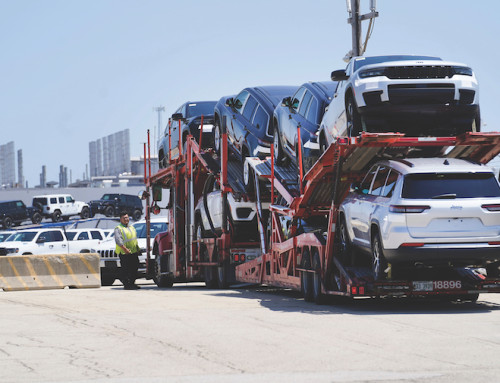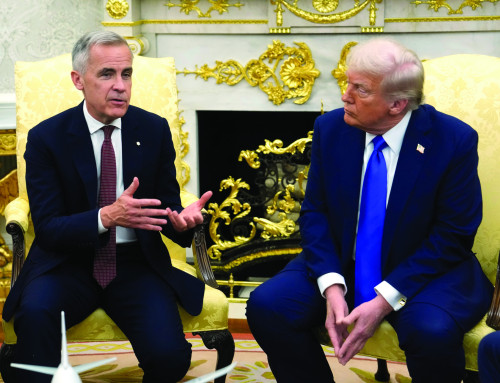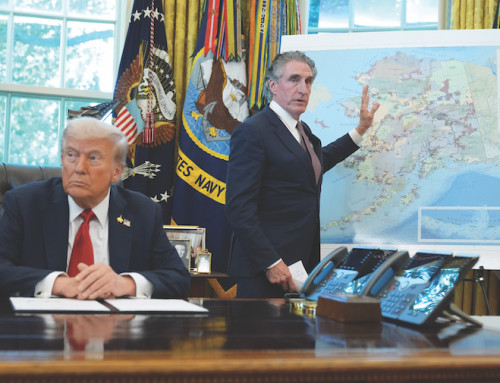WASHINGTON (AP) — The United States and global economies will grow a bit more this year than previously forecast as the Trump administration’s tariffs have so far proved less disruptive than expected, the International Monetary Fund said this week, though the agency also said the extensive duties still pose risks.
The United States’ economy will expand 2 percent in 2025, the IMF projected in its influential semiannual forecast, the World Economic Outlook.
That is slightly higher than the 1.9 percent forecast in the IMF’s last update in July and 1.8 percent in April. The U.S. should grow 2.1 percent next year, also just one-tenth of a percent faster than its previous projection, the IMF said.
Its current forecasts are still down from a year ago, however, a sign that the international lending agency expects the tariffs to weaken the U.S. economy, in part by creating more uncertainty for businesses. Last October, the IMF forecast the U.S. would grow 2.2 percent this year.
All the projections also represent a slowing from 2024, when the nation’s economy expanded at a faster 2.8 percent rate.
The global economy, meanwhile, will grow 3.2 percent this year, up from a 3 percent estimate in July, the IMF forecast, and 3.1 percent in 2026, the same as its previous estimate.
While the U.S. and world economies have fared better than expected, it’s too soon to say they are fully in the clear, the IMF said, as Trump has continued to make tariff threats and it can take time for changes in international trade patterns to play out.
Last week, for example, Trump threatened to slap 100 percent duties on all imports from China, which caused a sharp fall in the stock market.
IMF chief economist Pierre-Olivier Gourinchas said at a news conference that the import taxes and ongoing threats to impose more duties have created ongoing uncertainty for many businesses and are weighing on the world economy.
“The tariff shock is here, and it is further dimming already weak growth prospects,” he said.
Gourinchas also said that a burst of investment in artificial intelligence, in the form of huge data centers and extensive computing power, has helped offset the drag from trade and boosting the U.S. economy. Yet if a financial market bubble formed and then burst, it could sharply slow business investment and consumer spending, he said.
“There are echoes in the current tech investment surge of the dot-com boom of the late 1990s,” he said. “It was the internet then, it is AI now.”
Shares of two companies active in the AI sector, AMD and Oracle, which this week announced an expanding partnership, have seen their shares rise 80 percent this year.
Gains in AI-related stock values have lifted Americans’ wealth and fueled consumer spending, Gourinchas said, just as companies are ramping up their investments in advanced computer chips and building data centers. Increased spending and investment could push central banks to raise interest rates over time, he said.
Gourinchas also offered several reasons the U.S. and global economies have remained resilient after the widespread imposition of tariffs earlier this year.
“First and foremost, the tariff shock itself is smaller than initially feared, with many trade deals and exemptions,” he said. “Most countries also refrained from retaliation, keeping the trading system open. And the private sector also proved agile, front-loading imports and rerouting supply chains.”
By front-loading imports, many American companies were able to stock up on goods before the duties took effect, enabling them to avoid or delay price increases.
Yet many of those factors only reflect “temporary relief, rather than underlying strength in economic fundamentals,” the IMF’s report said.
The IMF also said that import price data in the U.S. shows that so far importers and retailers are paying most of the tariffs, not overseas companies, as many Trump administration officials have predicted. Over time, those firms are expected to pass on more of the price hikes to consumers, the report said.








